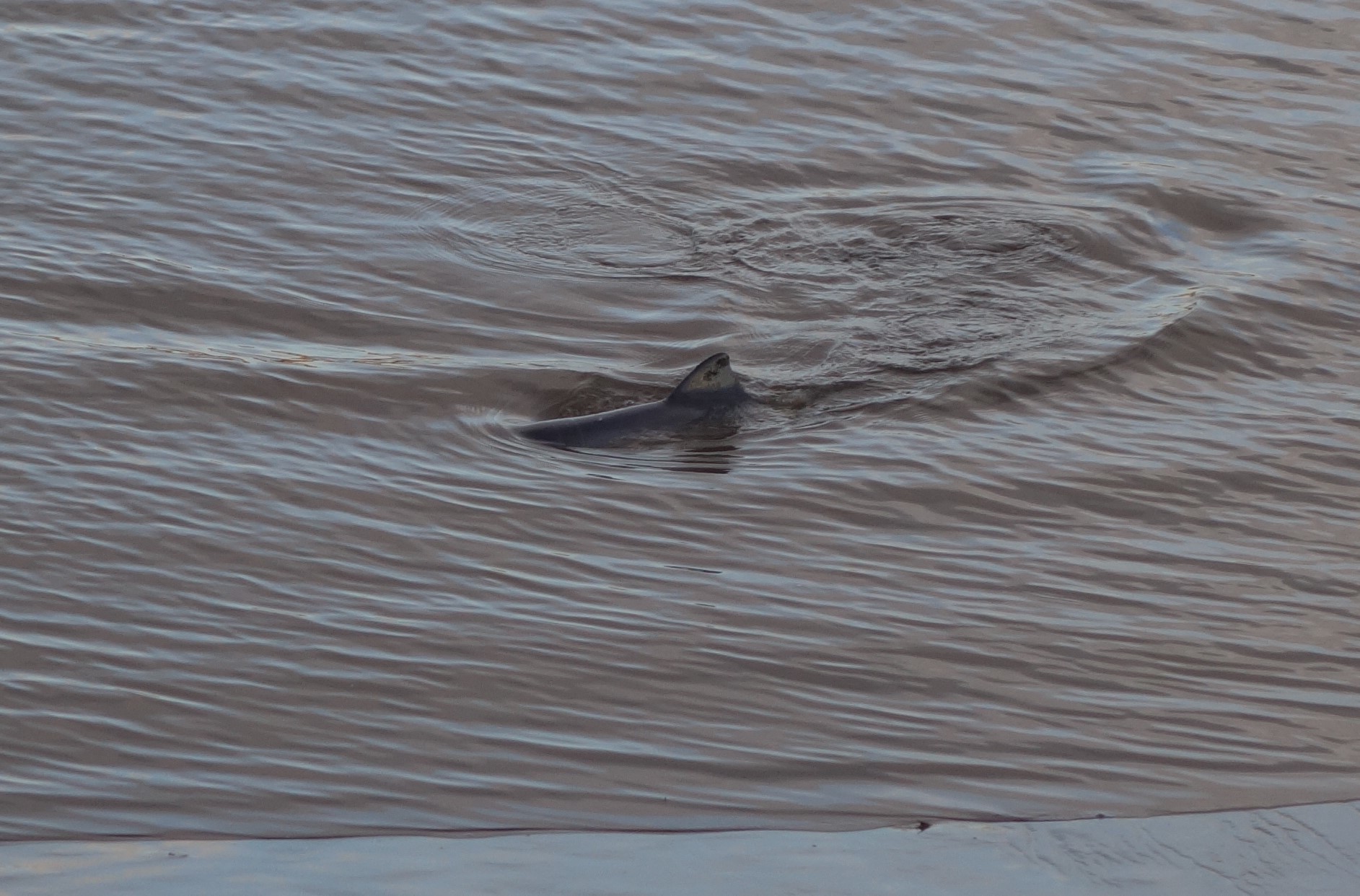There are surprises and then there are surprises – but nothing had quite prepared me for the astonishment of finding a couple of porpoises swimming in the River Forth a few miles downstream from Stirling.
I was on the north shore of the river when I noticed a submerged bow wave rolling through the water, a bit like a torpedo trail. Seal, I thought. But this was no seal, for instead the triangular fin of a porpoise broke through the muddy water. My goodness, this was incredibly far up the Forth for a porpoise to occur, what on earth was it doing?
It was hard to be sure, but it looked like all was not well with this little cetacean. It kept on surging towards the shore, sometimes grounding in the mud, before clearing itself with an energetic flap of the tail. Shortly afterwards, I noticed another porpoise in the middle of the channel, almost as if keeping a watchful eye on its companion. Could this be a mother and a well-grown calf and one of the pair was in trouble?
I will never know and there is even the possibility that the individual floundering in the brackish shallows was absolutely fine and simply chasing fish. Certainly, young salmon smolts will be heading out to sea just now, although herring, whiting and sprats are the normal fare of a porpoise’s diet.
Porpoises are undeniably attractive creatures, so refined and well adapted to their watery environment. It is hardly surprising that we have such a special affinity with these animals and I’m fond of their endearing nickname ‘puffing pig’, which refers to the sneeze-like sound made when breathing.
I watched these porpoises for a further hour before the evening darkness took hold. I can only hope that this pair of puffing pigs made it safely back to the open sea.
By the edge of my local wood, in an area rich in wood anemones and yellow-flowered lesser celandines, carder bees have been going about their business. Furred with ginger-brown, they are great fun to watch and always on the move. They are so-named because they weave their nests with moss and grass much in the same manner as if carding wool.
White-tailed bumblebees are about too. They are such versatile bees and have mastered the technique of biting a hole at the base of longer flowers such as honeysuckle so as to feast upon nectar that they would otherwise be unable to reach.
The dawn chorus is in full swing just now, with newly arrived warblers adding to the tuneful melodies sung by our blackbirds and song thrushes. Chiffchaffs were the first of our warblers to make their presence felt. Some describe their two-tone ‘chiff-chaff’ call as rather monotonous but I like its reassuring quality. When other warblers have fallen silent in August, the little chiffchaff will continue to sing, albeit not as enthusiastically as before.
Info
Porpoises can be found all along the coastline of Courier Country but are hard to see because they are smaller than dolphins and seldom jump out of the water.










